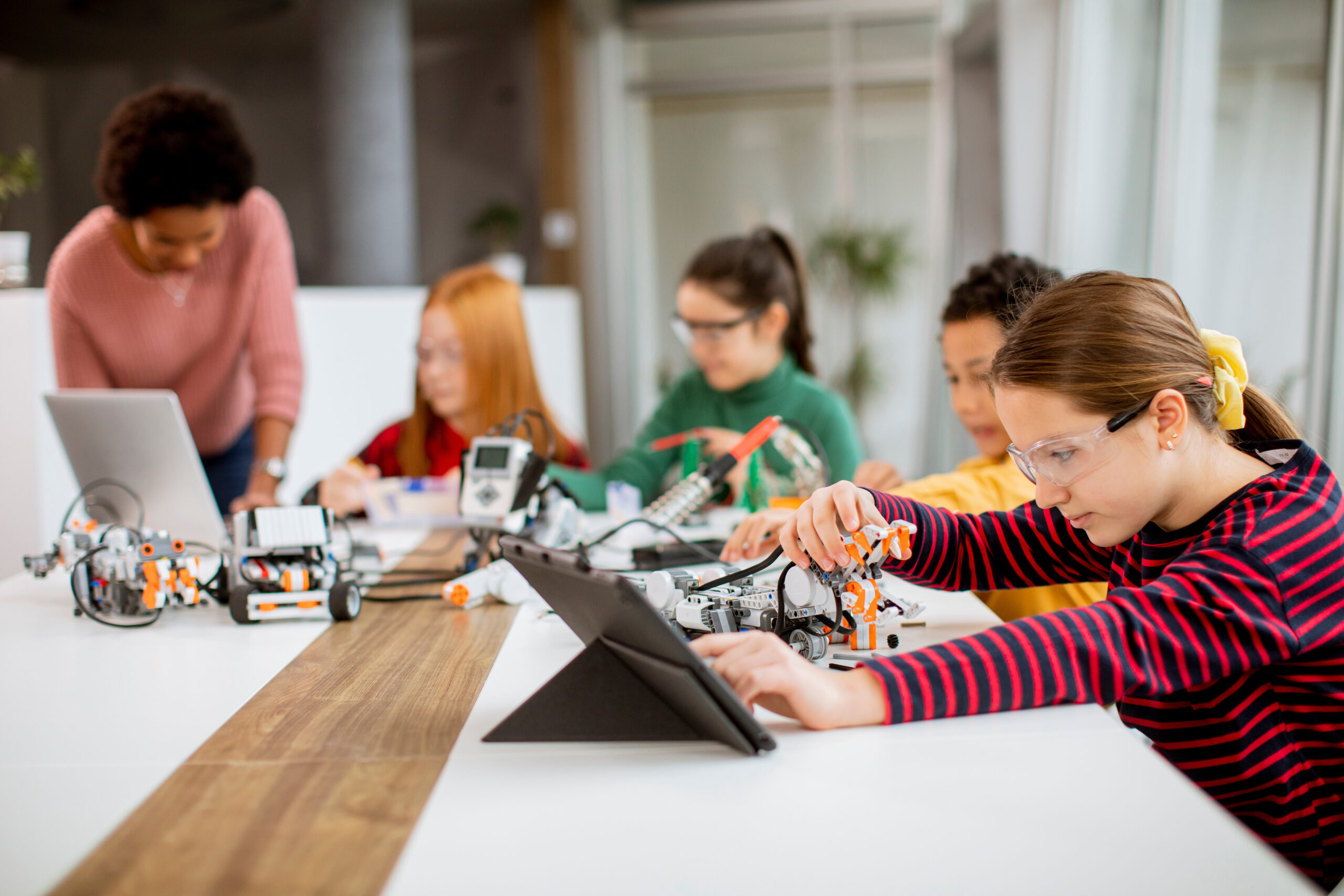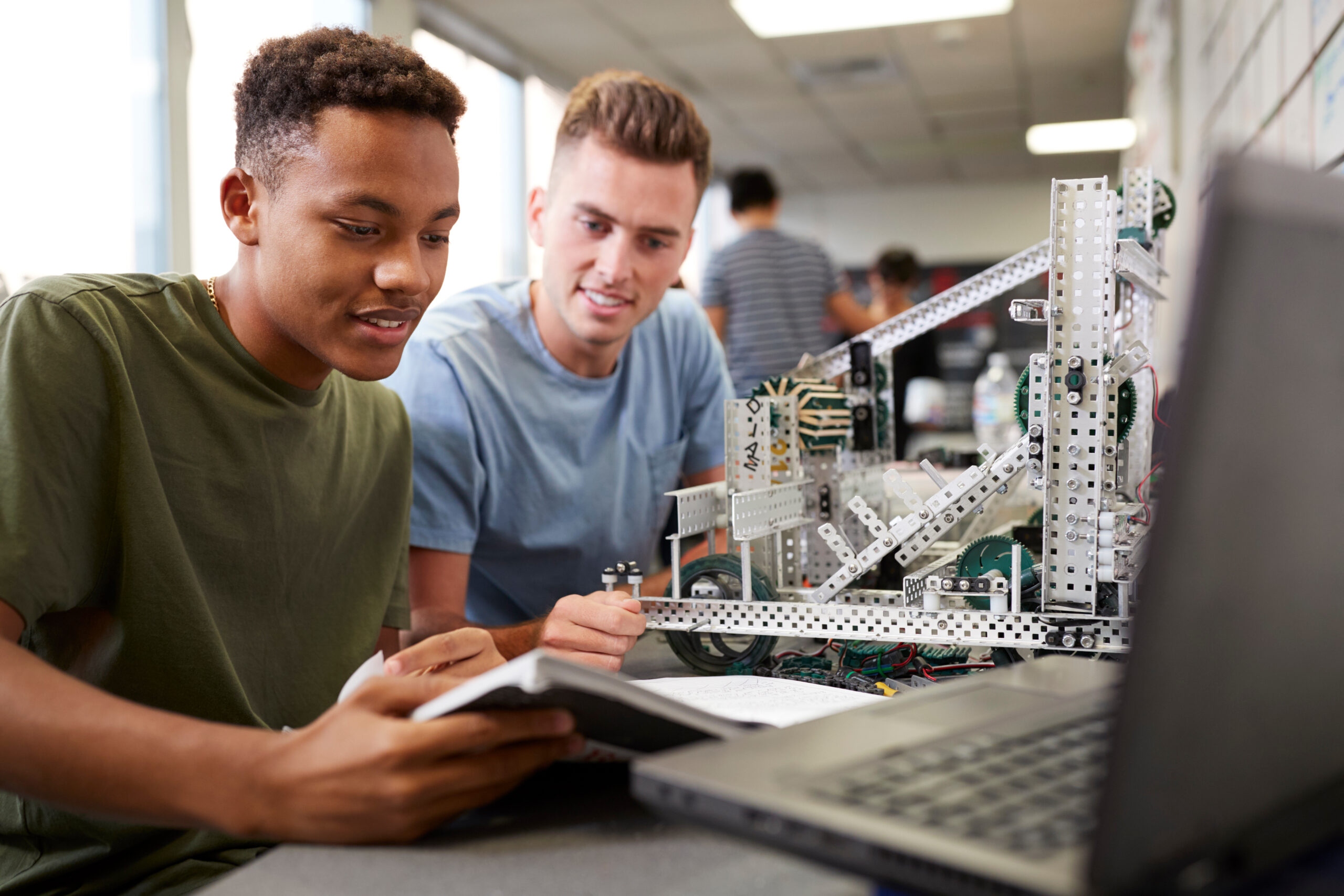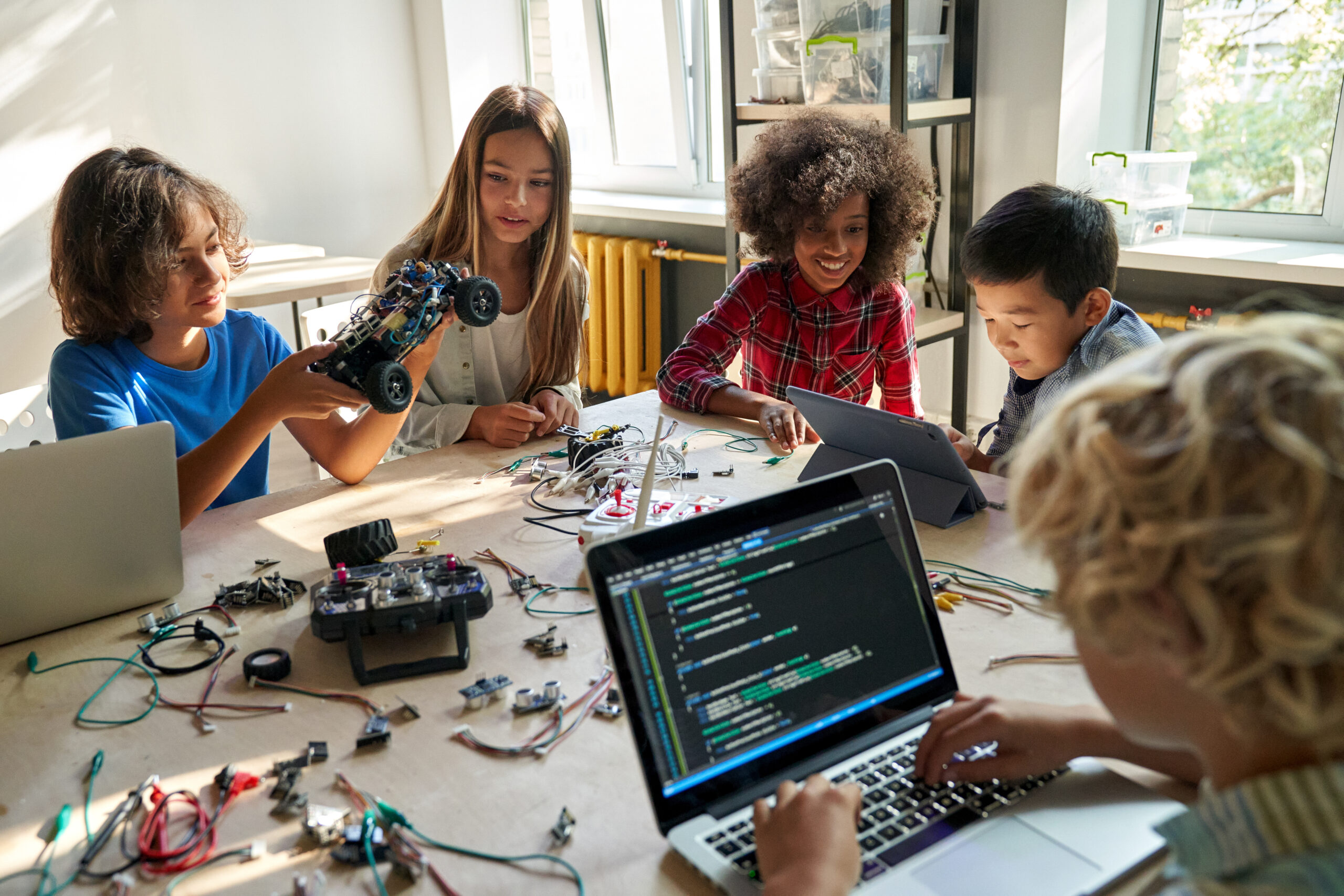What role does robotics play in empowering the next generation of engineers and inventors? How are global robotics competitions building bridges between academia and industry? How can creative innovation reshape the future of robotics education?
Robotics isn’t just about machines—it’s about imagination, collaboration, and solving real-world problems through engineering and creativity. This blog explores how global initiatives like FIRST Robotics and youth-driven programs such as Young Inventors Showcase are opening doors for students to engage in hands-on STEM experiences, develop problem-solving skills, and build meaningful connections with mentors and industry leaders. These competitions aren’t just events—they’re launching pads for the innovators of tomorrow.
At the heart of this movement is the belief that robotics should be accessible to all youth, regardless of background. The blog also highlights key academic and industry partnerships, including efforts by the USPTO, Microsoft’s TEALS Program, and the Gene Haas Foundation, which are helping to expand access to robotics education globally. As the world evolves, fostering creativity and innovation through robotics is critical to building a more inclusive and forward-thinking tech future.
Robotics and engineering are more than technical disciplines—they’re the foundation of creative problem-solving and groundbreaking innovation. Robotics programs, clubs, and competitions exist worldwide, and inventor advocates and educators are using them to inspire the next generation of inventors, engineers, and great thinkers.
Consider FIRST Robotics, for example, founded by Dean Kamen, the inventor of Segway. Events like these are helping to advance technology and build a global community of innovators through competitions and programming that allow students to blend science, engineering, and creativity to solve real-world challenges.
The impact of robotics and creative innovation extends beyond competitions and education, though. Universities, government agencies, and private organizations are all beginning to recognize the potential of these young, tech-driven minds and are working together to create more opportunities for technological growth and advancement.
This blog will explore the intersection of robotics, engineering, and creative innovation and how we can continue fueling technology’s momentum to expand robotics education around the world.
Table of Contents:
The Global Impact of Robotics Competitions
Engineering as a Foundation for Creative Problem-Solving
The Role of Innovation in Robotics Development
Industry & Academic Collaboration in Robotics
Future Opportunities in Robotics & Engineering
Expanding the Reach of Robotics & Engineering Education
The Global Impact of Robotics Competitions
The worldwide robotics competition space is huge. The FIRST Robotics Competition—which hosted its finals in Houston the past two years—is a testament to how massive the movement has become. With over 1,000 teams from 180 countries and 60,000 people in attendance, this robotics competition is more than just a contest. It’s a community-building opportunity. Students gain hands-on experience, network with industry professionals, and get a glimpse into the future of technology.
Events like these serve as a launchpad for the next generation of engineers and entrepreneurs. Moreover, they also make the fields of robotics and engineering more accessible, allowing anyone who is interested to participate. The FIRST Robotics Competition, in particular, welcomes all skill levels; whether the student has technical skills or not doesn’t matter. FIRST’s website outlines everything students and their adult mentors need in order to form a team and compete. The point is for the competition to have an incredibly low barrier to entry to get as many interested youth involved as possible.
Beyond serving as a chance to collaborate and learn, events like this, which happen globally and bring in minds from around the world, also create a bridge between academia and industry. Universities and tech companies often recruit talent from these events as they’re keenly aware that the students participating aren’t simply competing for a prize or accolades; they’re innovating because they’re genuinely passionate, right down to their core.
However, the impact of global robotics competitions isn’t solely about education and talent recruitment. These events go much deeper, ensuring youth have access to mentorship, funding, and the support necessary to pursue careers in the STEM field.
Engineering as a Foundation for Creative Problem-Solving
The core of engineering is about problem-solving. But oftentimes, the best solutions or inventions aren’t based on technical problem-solving. Instead, they require a blend of logic, creativity, and innovation. It’s all about thinking outside of the box.
Robotics competitions highlight this intersection, as teams must think beyond formulas, data, and blueprints to physically build the robots and navigate the challenges that can arise along the way. There’s a difference between structured problem-solving and open-ended creativity. The most successful young engineers have coding and mechanical skills, but more importantly, they’re adaptable, collaborative, and understand how to design with purpose.
Universities can nurture this mindset and the ability to problem-solve. Institutions like the Luddy School of Engineering, Merrimack College, and the University of Missouri, among several others, are all tuned in to the importance of supporting young innovators with engineering programs, mentorship opportunities, and even scholarships. To take it a step further, when robotics is integrated into mainstream education, students aren’t just learning technical theories; they’re also discovering ways to apply what they’ve learned to solve real-world challenges. This hands-on approach builds resilience and critical-thinking skills—two essential traits for any innovative engineer aiming for success.
The Role of Innovation in Robotics Development
Robotics challenges youth to rethink their approach to problems. Some of the most successful, impactful robotics programs emphasize creativity just as much as—sometimes even more than—engineering expertise.
Organizations like Young Inventors Showcase (YIS) take a unique, youth-focused approach to STEM education to foster innovative thinking at a young age. YIS encourages youth to come up with their own creative invention ideas. In contrast, other programs like Camp Invention give participants pre-set inventions to assemble, stripping them of the opportunity to be creative and bring their own ideas to life.
The difference between these two programs matters greatly. While structured programs can teach fundamental skills in a controlled environment, they don’t foster innovation and creativity the way an initiative like YIS does. Innovation-driven programs empower students to think beyond challenges and limitations—a mindset shift that is absolutely essential in today’s rapidly evolving tech and engineering landscape.
Robotics competitions are already a global phenomenon, but as interest in the field—and STEM as a whole—continues to evolve, it’s important to support initiatives like YIS that encourage original, creative thinking because that’s what youth really need to bring their ideas to life.
Industry & Academic Collaboration in Robotics
To take robotics education to the next level beyond just hosting competitions, partnerships between universities, industry leaders, and the organizations hosting the competitions are essential. In fact, there are already several institutions acting as state-level umbrella organizations to expand STEM access:
- The United States Patent and Trademark Office’s (USPTO) EquIP HQ
- Microsoft’s TEALS Program
- TKS
- Gene Haas Foundation
1. USPTO EquIP HQ
Created by the USPTO, EquIP HQ is a great resource full of educational materials on inventing, specifically regarding intellectual property. It offers educational resources for parents, teachers, kids, and teens, including videos, interactive games and activities, and links to other relevant organizations and collaborators who support invention education and encourage youth to follow through on their ideas.
2. Microsoft’s TEALS Program
The Microsoft Technology Education and Learning Support (TEALS) Program is a global initiative that connects students with tech professionals. The program partners with organizations and nonprofits worldwide to increase access to computer science education. In the 2023-2024 school year alone, the program helped train and support nearly 10 million educators and students worldwide.
3. TKS
TKS is a global accelerator for teenage innovators. They offer a variety of programs, both virtual and in-person, for high school students ages 13 to 17. The programs expose students to emerging technologies and engineering practices, connect them with mentorship opportunities, and even help connect youth with tech and engineering jobs once they graduate.
4. Gene Haas Foundation
The Gene Haas Foundation exists to provide funding and support for STEM initiatives. It provides scholarships and teacher training and even sponsors teams to participate in robotics competitions. Over the years, the foundation has donated millions to educational programs and local organizations. In 2024, it distributed over $32 million in grants, supporting the next generation of innovative tech professionals.
Future Opportunities in Robotics & Engineering
There are countless young inventors and creative minds out there with innovative ideas they want to bring to life, but they often lack the necessary funding and resources. Fortunately, there are several emerging opportunities to support the next wave of innovation:
- Government Support: The Science, Mathematics, and Research for Transformation (SMART) scholarship from the Department of Defense (DoD) is an excellent example of government support for STEM education. The scholarship is for any college student pursuing a STEM degree and offers full tuition, annual stipends, internships, and guaranteed civilian employment with the DoD after graduation.
- Corporate Investment: Corporations are also contributing to the future generation of STEM leaders. Companies like Microsoft and Amazon are investing in early-stage robotics education programs, creating a pipeline from education to employment.
- University Partnerships: Some universities are also leveraging recruitment, increasing their outreach efforts to younger students who express an interest in STEM or robotics, encouraging them to enroll in the university, or even offering scholarships to secure their next class of students.
By expanding initiatives like these, we can ensure that students not only have the necessary technical skills and the support to innovate but also the opportunities to make their dreams and wildest ideas a reality.
Expanding the Reach of Robotics & Engineering Education
Research shows that 75% of Gen Z youth are interested in STEM careers. If we want to future-proof innovation, we need to start early. That’s why engaging younger students in robotics and engineering is so essential, especially if we want to sustain long-term growth in STEM fields. That’s why YIS opens its programs up to youth of all ages. You’re never too young to invent.
With Gen Z youth expressing a growing interest in STEM fields, supporting causes that help expand the reach of robotics and engineering education is important. This is especially true for young girls and youth from underrepresented, marginalized groups who may not have easy access to STEM education or may face greater barriers than their peers.
Some of the most effective strategies to bridge this gap include:
- Mentorship Programs: This could include connecting high school students—and even younger—with robotics teams, universities, and industry professionals in technology and engineering to help guide youth toward higher education, jobs, and other opportunities.
- Global Networking: The more we can expand outreach, the better. There are creative thinkers worldwide who may just need funding or a little support to take their ideas to the next level. You never know where the next great invention could be waiting to come to fruition, which is why we need to look outside of our own borders, tapping into the diverse perspectives around the world.
In the long term, robotics and engineering should go beyond competition. They should be integrated into mainstream education so that they become a lifelong pursuit for youth worldwide who are interested in creating unique solutions to solve the world’s most pressing challenges or simply streamline daily life.
Conclusion
The intersection of robotics, engineering, and creative innovation is shaping the technology industry’s future. But in order to thrive in this moment, we need to continuously foster collaboration between universities, industry leaders, and the organizations hosting competitions and events to ensure we’re reaching youth at every possible opportunity and connecting them to the resources they need to continue moving onward and upward.
The impact of global robotics competitions, like the massive FIRST Robotics, is much more profound than just trophies and titles. It’s about creating a supportive pipeline for the next generation of inventors and innovative minds. Hands-on learning opportunities and encouraging critical thinking and collaboration are key ways to prepare young minds to tackle challenges from sustainability and climate change to space exploration.
To achieve this, we must do more to expand access to STEM and robotics education. Many talented students—especially those in underrepresented communities—lack access to the resources, funding, and guidance needed to participate in these opportunities.
By investing in young innovators today, we’re investing in the future of technology and society at large. You never know; the next great breakthrough in AI or healthcare technology could come from a student currently competing in a robotics competition from some far corner of the world. We’ll never know unless we ensure the proper support is available.
This requires continued investment, mentorship, advocacy, and access to opportunities for youth worldwide. By working together, we can help today’s students become tomorrow’s world-changing industry leaders, inspiring them to innovate and shape the future.




